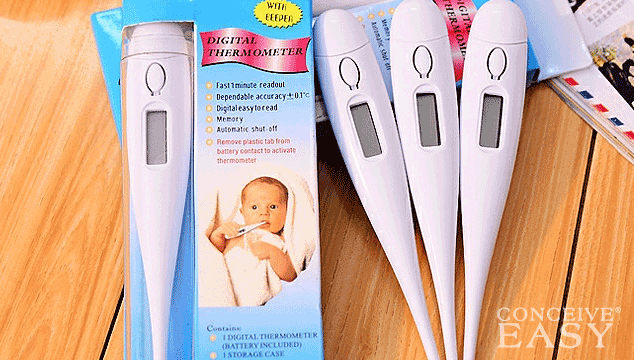![]() The information provided by our expert should not constitute a diagnosis of your condition. Always consult a medical practitioner or healthcare provider for a formal diagnosis. By making use of this content, you agree that ConceiveEasy and the expert assume no liability.
The information provided by our expert should not constitute a diagnosis of your condition. Always consult a medical practitioner or healthcare provider for a formal diagnosis. By making use of this content, you agree that ConceiveEasy and the expert assume no liability.
If you are looking to chart your ovulation, one way that many women have found extremely beneficial is a BBT or a basal body temperature thermometer. When calculating, this is the best way to learn which days you ovulate each month without being required to spend exorbitant amounts of money on ovulation testing kits. Claim Your 20 Free Pregnancy Tests – Click Here
Learning your ovulation cycle is also important when you are trying to determine if you are ovulating correctly. If you find that you are having trouble trying to conceive, your doctor’s first question will be whether you are monitoring your ovulation schedule. The chances are high that he will then require you to monitor this for a couple of months before beginning fertility treatment.

By keeping track of your BBT, you are accomplishing two things. First, you are making sure that your cycle is indeed healthy and you are ovulating in such a way that you can get pregnant. Another factor that you are monitoring is the days that you should have intercourse. Since a woman only has a small window of time that she can get pregnant each month and a BBT chart will help you learn exactly which days you are fertile and ready to conceive.

Keeping track of your temperature accurately is extremely important. First, you need to make sure that you have everything that you need close by where you sleep. The goal is to not need to move much when you are ready to test your temperature. The supplies that you need are a basic calendar, a BBT thermometer and a pen or pencil.
You will want to test your temperature first thing in the morning. You should do this with as little movement as possible, which means that you should not use the bathroom, get a drink of water or even get out of bed before you take your temperature. Even the slightest amount of movement can raise your temperature and it is important that your reading is as accurate as possible.
Another note is that you should test at the same time each morning. Varying the timing by a mere 15 minutes can alter the results that you should see and make getting an accurate reading difficult. After you have taken your temperature, be sure to record it in your calendar and you are then free to go about your day as usual.

The reason that you are required to purchase a specialized thermometer for this testing is due to the fact that your temperature only fluctuates slightly at the time of ovulation. At most you may see an increase of a degree, but more likely it will be only around 0.4 degrees higher. The actual change in degree differs based upon progesterone that is found in the body.
One of the downsides of a BBT reading is the fact that you actually do not know that you have ovulated until after it has passed. However, this helps you prepare for the following month and the months after in order to plan the days you have intercourse around the days that you are ovulating.

Some women have even discovered that they are pregnant due to keeping track of their BBT levels. Because the hormone that lowers our temperature back to normal is not present when we are pregnant, it is possible for our basal temperature to remain high throughout our pregnancies.
If you have been keeping track of your BBT and have noticed a relatively high temperature for the past several days, now would be a good time to take a pregnancy test. If you are not pregnant, your temperatures should return to normal about the time of your period.

A BBT needs to be extremely accurate in order to help a woman track her ovulation. This is because our temperatures only fluctuate slightly and it would be impossible to see changes with a normal thermometer. However, this method does take some careful planning and some dedication for it to work correctly. Be sure that you follow the instructions carefully and do not stray from them. If you do, you have a high likelihood of receiving a false positive and therefore not knowing when your true ovulation cycle really is.










Comments